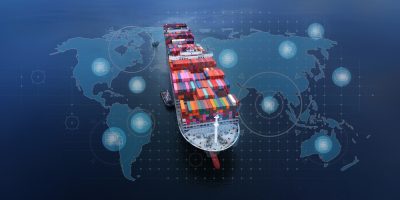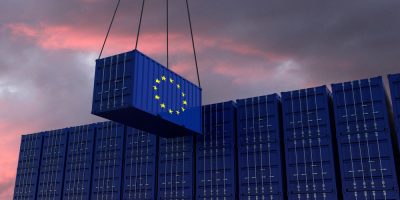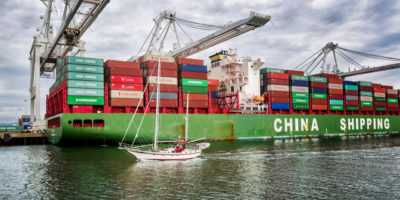-
EEUU
US Tariffs | Commercial risk management in contracts with international clients and suppliers
14 abril 2025
- Contratos de distribución
- Derecho Fiscal y Tributario
The most dangerous mistake one can make after the announcement of the (partial) suspension of U.S. duties for 90 days is to hope that everything will go well and we will return to the pre-April 2 world.
First, because very invasive tariffs remain in place: 10 percent on all countries that trade with the U.S., including the EU, 25 percent on automotive, 25 percent on steel and aluminum, 145 percent on China.
Second, because it is impossible to predict the actions of the U.S. Administration in the short and medium term: it cannot be ruled out that tariffs will remain, increase, change targets or that other factors will intervene to turn the tide in international markets, such as an escalation of the trade war with China.
The 90-day suspension is an opportunity
The U.S.’s temporary suspension of tariffs represents a valuable window that should be used not only as a truce but also as a valuable room for action: 90 days to rehash contracts, renegotiate key clauses, and insert levers of flexibility that can protect business in various future scenarios in the U.S. and other markets.
Today’s exporters cannot afford to «sit back and see what will happen»-it is time to act, and to do so professionally and strategically. Let’s look at a checklist of important points to consider.
What do contracts with customers and suppliers entail?
The first point is to survey agreements with the trade network in the U.S. and other countries that export to the U.S., as well as with upstream suppliers in the supply chain.
Is there a written contract? The worst-case scenario – unfortunately a very frequent one – is when the parties cooperate informally, only based on orders and order confirmations. This leaves undefined not only what happens in the case of imposition of duties, but also a whole range of other points, for example, limits on damages that can be claimed in the case of breach of contract, the duration of the agreement, the applicable law, and how any disputes will be resolved.
Another very problematic scenario is one in which contracts exist, but they are generic and do not include the necessary covenants to manage the risks involved in operating in a highly litigious market such as the U.S., which, moreover, has very high legal costs.
Having done this analysis, the necessary actions can be put in place, prioritizing according to the importance of business relationships and as appropriate:
- Negotiate and conclude a written contract from scratch
- Replace the existing agreement with a complete and correct contract
- Amend and integrate the existing agreement with pacts to manage tariffs and other causes of price fluctuations
Let us dwell on the last scenario, assuming that there is a complete and correct contract but one that does not regulate price and cost fluctuation as a direct or indirect consequence of the introduction of duties.
Contract Addendum
In such cases, the correct course of action is to sign an Addendum to the original contract, specifying which covenants are being waived and which covenants are being added. It is essential that the Addendum be negotiated and signed by persons with the power of representation of the parties and that it be drafted with the help of lawyers who specialize in this field. In addition to including correct clauses, it is necessary to verify that the covenants are valid according to the rules of law applicable to the contract.
Here are some clauses that can be the subject of the Addendum, to be modulated according to the specific case and possible scenarios.
Tariff Cost Sharing
By introducing this covenant, it is provided that in the event that duties are confirmed at [x]% or are reduced or increased within certain established thresholds, the Parties will share the increase equally, or according to other established percentages.
There may also be a ceiling on tariffs beyond which a party has the right to withdraw from the contract or request the suspension of certain orders for a specified period of time, after which it has the right to withdraw.
Price Adjustment
With this covenant, a discount or an increase in the product’s price is agreed upon, as the case may be, in the case of a duty greater than [x]%.
Among the use cases, in addition to that of the company exporting to the U.S. or other intermediate markets, with final destination of the products in the U.S., is that of those who purchase a product subject to import duty and resell it, processed or assembled.
Right to Cancel or Postpone Confirmed Orders
This covenant gives the right to revoke or suspend for a certain period already negotiated orders, as such binding, in case of confirmation or introduction of duties above a certain threshold, for example, if 20% taxation was confirmed for the import of wine from the EU.
The clause can be combined with previous covenants, for example, by stipulating that below the specified threshold, the contracts remain valid, and the parties share the duty or have the right to renegotiate the price.
Supply Forecast Adjustment
With this clause the Parties can modify supply programs already agreed for a specific duration (e.g., 24 months), with continuous sales and purchase obligations at a fixed price or indexable only within certain limits. The aim is to agree on the prerequisites for reshaping supply programs in the short and medium term, which can be very useful for defining the rules that will apply to relationships with key suppliers or customers for possible changes in volumes, delivery times, and prices.
Right to Source from Alternative Suppliers
This covenant serves to be authorized, if necessary, to source alternative suppliers of components or raw materials to those previously authorized in the contract with the end customer, for example, in cases where purchasing from the original suppliers has become too costly or difficult due to duties imposed at import or in previous steps in the supply chain, or other events such as currency or price fluctuation of certain commodities beyond a certain level established in the agreement.
Hardship and Force Majeure
The imposition of duties cannot be invoked as a cause of Force Majeure or hardship, respectively, to excuse contract non-performance or to renegotiate the price, even in cases of very high price increases (such as the 145% duty imposed on Chinese products). This conclusion is almost uniform under the law and jurisprudence of the major countries involved in the tariff war: U.S., China, Canada, Mexico, France and Italy: I refer to this practical guide for a timely examination of what the various rules provide.
If the contract lacks a well drafter Force Majeure and Hardship clause, or contains a generic clause, it is important to get your hands on revising it to expressly state the cases in which a party is entitled to suspend or terminate the contract, how and when to communicate the decision to invoke the exemption, and the consequences on the parties’ contractual obligations. You can go deeper on this topic here.
Conclusion
It is essential to prepare for possible future scenarios regarding duties (confirmed, increased, changed, or decreased) and to determine the consequences on trade relations with foreign clients and suppliers: moving today, at a standstill (or nearly so), allows entrepreneurs to negotiate shared and fair solutions and to avoid, as far as possible, the emergence of tensions and conflicts with the various partners along the international supply chain.
The Brazilian market has not been immune to the protectionist wave of «America First.» If such measures persist over time, they could have a lasting impact on the local economy. Still, a sour lemon can often become a sweet caipirinha in the resilient and optimistic spirit that characterizes both Brazilian society and its entrepreneurs.
As is often the case in the chessboard of global economic geopolitics, a move from one player creates room for another countermove. Brazil reacted with reciprocal trade measures, signaling clearly that it would not accept a position of commercial vulnerability.
This firmer stance — almost unthinkable in earlier years — strengthened Brazil’s image in Europe as a country ready to reposition itself with greater autonomy and pragmatism, opening new doors to international markets. In a world where global value chains are being restructured and reliable trade partners are in high demand, Brazil is increasingly seen not just as a supplier of raw materials, but as a strategic partner in critical industries.
The rapprochement with Europe has been further energized by progress in the Mercosur–European Union Agreement, whose negotiations spanned decades and now seem to be gaining momentum. While the United States embraces a more isolationist commercial posture, Europe is actively diversifying its trade relations — and Brazil, by demonstrating a commitment to clear rules, economic stability, and legal certainty, emerges as a natural candidate to fill that gap.
The Direct Impact of U.S. Tariffs
The trade measures introduced under President Trump primarily affected Brazilian producers of semi-finished steel and primary aluminum, with the removal of long-standing exemptions and quotas. In 2024, Brazil exported US$ 2.2 billion in semi-finished steel to the United States, representing nearly 60% of U.S. imports in that category. In the same year, Brazilian aluminum exports to the U.S. reached US$ 796 million, accounting for 14% of the sector’s total. Losses in exports for 2025 are estimated at around US$ 1.5 billion.
Brazil’s Response and a New Phase
In April 2025, the Brazilian Congress passed a new legal framework for trade retaliation, empowering the Executive Branch to adopt countermeasures in a faster and more technically structured way. The new legislation allows, for example, the automatic imposition of retaliatory tariffs on goods from countries that adopt unilateral measures incompatible with WTO norms; the suspension of tax or customs benefits previously granted under bilateral agreements; the creation of a list of priority sectors for trade defense and diversification of export markets.
Beyond the retaliation itself, the move marked a significant shift in posture: Brazil began positioning itself as an active player in global trade governance, aligning with mid-sized economies that advocate for predictable, balanced, and rules-based trade relations.
An Opportunity for Brazil–Europe Relations
This new stage sets Brazil as a reliable supplier to European industry — not only of raw materials but also of higher-value-added goods, particularly in processed foods, bioenergy, critical minerals, pharmaceuticals, and infrastructure.
Moreover, as US–China tensions drive European companies to seek nearshoring or “friend-shoring” strategies with more predictable partners, Brazil, with its clean energy matrix, large domestic market, and relatively stable institutions, emerges as a strong alternative.
Legal Implications and Strategic Recommendations
This changing landscape brings new opportunities for companies and legal advisors involved in Brazil–Europe investment and trade relations. Particular attention should be paid to:
- Monitoring rules of origin in the Mercosur–EU agreement, especially in sectors requiring supply chain restructuring;
- Reviewing contractual and tax structures for import/export operations, including clauses addressing tariff instability or non-tariff barriers (e.g., environmental or sanitary standards), and clearly defining force majeure events;
- Reassessing distribution and agency agreements in light of the new commercial environment;
- Exploring joint ventures and technology transfer arrangements with Brazilian partners, particularly in bioeconomy, green hydrogen, and mineral processing.
From lemon to caipirinha
The world is becoming more fragmented and competitive, but also more open to realignment. What began as a protectionist blow from the United States has revealed new opportunities for transatlantic cooperation. For Brazil, Europe is no longer just a client: it is poised to become a long-term strategic partner. It is now up to lawyers and businesses on both sides of the Atlantic to turn this opportunity into lasting, mutually beneficial relationships.
On April 2, 2025, U.S. tariffs toward products from the EU will go into effect.
Given what happened with the tariffs imposed on Canada and Mexico, with a chase of announcements of entry into force and suspensions and new announcements, it is impossible to make even short-term predictions.
One must prepare oneself for the possibility of imposition of duty, which is a foreseeable and anticipated event and, as such, should be regulated in the contract. Failure to do so is likely to be very costly because there are no valid arguments for excusing the non-performance of contracts already concluded by invoking a situation of Force Majeure (which does not exist, because the performance has not become objectively impossible) or of supervening excessive onerousness or hardship: even in the case of increases well over 25 percent, tribunals around the world tend to rule out its invocation).
The caution that can be taken is to negotiate a price update clause, expressly referring, among other factors, to the eventual adoption of tariffs.
A useful clause may be the so-called Escalator or Price Adjustment Clause, by which the right to renegotiate the price is provided in the case of imposing a duty above a certain threshold, for example:
PRICE ADJUSTMENT CLAUSE
Triggering Event
A «Triggering Event» shall be deemed to occur if:
- There is an increase in customs duties or the introduction of new trade barriers not previously contemplated, resulting in an increase in the total price of the goods or services by X% or more.
- Such an increase affects either (i) the Buyer directly or (ii) the Seller due to tariffs imposed on its upstream suppliers, materially impacting the cost of performance.
Trigger Mechanism
In the event of a Triggering Event:
- The affected Party shall notify the other Party in writing within thirty (30) days of the effective date of the customs duty change or the introduction of the new trade barrier.
- The notification must include supporting documentation demonstrating the financial impact of the Triggering Event.
Renegotiation Process
Upon receipt of a valid notification, the Parties shall engage in good-faith negotiations for sixty (60) days to agree on an adjusted price that reflects the increased costs.
Failure to Reach an Agreement
If the Parties fail to reach an agreement on the price adjustment within the prescribed sixty (60) days:
Option 1 – Contract Termination: Either Party shall have the right to terminate the contract by providing written notice to the other Party, without liability for damages, except for obligations already accrued up to the termination date.
Option 2 – Third-Party Arbitrator: The Parties shall appoint an independent third-party arbitrator with expertise in international trade and pricing. The arbitrator shall determine a fair market price, which shall be binding on both Parties. The cost of the arbitrator shall be borne equally by both Parties unless otherwise agreed.
***
Another possible tool as an alternative to the clause just seen is the so-called Cost Sharing clause, for example:
COST SHARING CLAUSE
Triggering Event
A «Triggering Event» shall be deemed to occur if there is an increase in customs duties or the introduction of new trade barriers not previously contemplated, resulting in an increase in the total price of the goods by [X]% or more. Such an increase will be borne by the Buyer by up to [X]%, while higher increases will be shared equally between the seller and buyer.
***
It is appropriate for such clauses to be adapted on a case-by-case basis to best to reflect the scenarios that are expected to affect the price of the products, namely
- imposition of duty on U.S. entry
- imposition of duty on EU entry
but also indirect effects, such as where it is the seller who invokes price renegotiation, for example because the price of the product has increased due to the duty paid by one of its upstream suppliers in the supply chain, in which case it is crucial to identify which products are relevant and to document the increases resulting from the imposition of tariffs.
“This agreement is not just an economic opportunity. It is a political necessity.” In the current geopolitical context of growing protectionism and significant regional conflicts, Ursula von der Leyen’s statement says a lot.
Even though there is still a long way to go before the agreement is approved internally in each bloc and comes into force, the milestone is highly significant. It took 25 years from the start of negotiations between Mercosur and the European Union to reach a consensus text. The impacts will be considerable. Together, the blocs represent a GDP of over 22 trillion dollars, and are home to over 700 million people.
Our aim here is to highlight, in a simplified manner, the most important information about the agreement’s content and its progress, which we will update here at each stage.
What is it?
The agreement was signed as a trade treaty, with the main goal of reducing import and export tariffs, eliminating bureaucratic barriers, and facilitating trade between Mercosur countries and European Union members. Additionally, the pact includes commitments in areas such as sustainability, labor rights, technological cooperation, and environmental protection.
Mercosur (Southern Common Market) is an economic bloc created in 1991 by Brazil, Argentina, Paraguay, and Uruguay. Now, Bolivia and Chile participate as associated members, accessing some trade agreements, but not fully integrated into the common market. On the other hand, the European Union, with its 27 members (20 of which have adopted the common currency), is a broader union with greater economic and social integration compared to Mercosur.
What does the EU Mercosur agreement include?
Trade in goods:
- Reduction or elimination of tariffs on products traded between the blocs, such as meat, grains, fruits, automobiles, wines, and dairy products (the expected reduction will affect over 90% of the traded goods between the blocks).
- Easier access to European high-tech and industrialized products.
Trade in services:
- Expands access to financial services, telecommunications, transportation, and consulting for businesses in both blocs.
Movement of people:
- Provides facilities for temporary visas for qualified workers, such as technology professionals and engineers, promoting talent exchange.
- Encourages educational and cultural cooperation programs.
Sustainability and environment:
- Includes commitments to combat deforestation and meet the goals of the Paris Agreement on climate change.
- Provides penalties for violations of environmental standards.
Intellectual property and regulations:
- Protects geographical indications for European cheese, wines, and South American coffee and cachaça.
- Harmonizes regulatory standards to reduce bureaucracy and avoid technical barriers.
Labor rights:
- Commitment to decent working conditions and compliance with International Labor Organization (ILO) standards.
Which benefits to expect?
- Access to new markets: Mercosur companies will have easier access to the European market, which has more than 450 million consumers, while European products will become more competitive in South America.
- Costs reduction: The elimination or reduction of tariffs could lower the prices of products such as wines, cheese, and automobiles and boost South American exports of meat, grains, and fruits.
- Strengthened diplomatic relations: The agreement symbolizes a bridge of cooperation between two regions historically connected by cultural and economic ties.
What’s next?
The signing is only the first step. For the agreement to come into force, it must be ratified by both blocs, and the approval process is quite distinct between them, since Mercosur does not have a common Council or Parliament.
In the European Union, the ratification process involves multiple institutional steps:
- Council of the European Union: Ministers from the member states will discuss and approve the text of the agreement. This step is crucial, as each country has representation and may raise specific national concerns.
- European Parliament: After approval by the Council, the European Parliament, composed of elected deputies, votes to ratify the agreement. The debate at this stage may include environmental, social, and economic impacts.
- National Parliaments: In cases where the agreement affects shared competencies between the bloc and member states (such as environmental regulations), it must also be approved by the parliaments of each member country. This can be challenging, given that countries like France and Ireland have already expressed specific concerns about agricultural and environmental issues.
In Mercosur, the approval depends on each member country:
- National Congresses: The agreement text is submitted to the parliaments of Brazil, Argentina, Paraguay, and Uruguay. Each congress evaluates independently, and approval depends on the political majority in each country.
- Political Context: Mercosur countries have diverse political realities. In Brazil, for example, environmental issues can spark heated debates, while in Argentina, the impact on agricultural competitiveness may be the focus of discussion.
- Regional Coordination: Even after national approval, it is necessary to ensure that all Mercosur members ratify the agreement, as the bloc acts as a single negotiating entity.
Stay tuned: you will find the update here as the processes advance.
On 20th February 2024, the European Union (EU) issued an update regarding the classification of non-cooperative tax jurisdictions. Hong Kong was removed from the EU’s tax cooperation watchlist and placed on the «white» list. This removal indicates that Hong Kong has taken significant measures to tackle the EU’s apprehensions and enhance its tax cooperation framework to adhere to international tax standards.
In 2021, the EU included Hong Kong in its tax cooperation watchlist due to concerns about potential instances of «double non-taxation» stemming from certain foreign-sourced passive income (FSIE) not being taxed in Hong Kong. In response to these concerns, Hong Kong introduced a new FSIE regime in January 2023. Under this regime, multinational enterprise entities receiving foreign-sourced dividends, interest, income from intellectual property usage, and gains from the disposal of shares or equity interests in Hong Kong must meet economic substance requirements to qualify for tax exemption.
On 1st January 2024, Hong Kong made further adjustments to its FSIE regime, broadening the range of assets related to foreign-sourced disposal gains to encompass assets beyond shares or equity interests. Subsequent to implementing these refinements, the EU conducted an assessment and concluded that Hong Kong had honored its commitment by amending the tax regime.
Acknowledging Hong Kong’s efforts and progress in addressing the concerns raised, the EU transferred Hong Kong from its tax cooperation watchlist to the «white» list on 20th February 2024.This signifies a significant step forward for Hong Kong, demonstrating its commitment to addressing concerns raised by the EU and its dedication to aligning with international tax standards.
Addressing EU Concerns and Implementing Change
In 2021, the EU expressed concerns regarding potential «double non-taxation» arising from certain foreign-sourced passive income (FSIE) not being subject to taxation in Hong Kong. In response, Hong Kong proactively implemented a new FSIE regime in January 2023. This regime requires multinational enterprises receiving qualifying foreign-sourced income, including dividends, interest, intellectual property income, and gains from the disposal of shares or equity interests in Hong Kong, to meet specific economic substance requirements to benefit from tax exemption.
Further demonstrating its commitment, Hong Kong expanded the scope of its FSIE regime on 1st January 2024 to encompass foreign-sourced disposal gains from assets beyond shares or equity interests. Following these improvements, the EU acknowledged Hong Kong’s efforts and reclassified its status, signifying its satisfaction with the implemented changes.
Looking Ahead: Navigating Complexities
Although the EU’s removal of Hong Kong from the watchlist is a positive development, challenges remain. Hong Kong needs to navigate a complex landscape to fully regain its position as a premier financial and business hub. Reassuring international investors and markets of its long-term stability will be crucial in this endeavor.
Balancing Priorities and Building Confidence
While Hong Kong enjoys a strong reputation for rule of law in the business sphere and maintains independence from mainland China, concerns regarding political freedoms persist. Addressing these concerns transparently and effectively will be essential in building international confidence and fostering a thriving business environment.
Ultimately, Hong Kong’s success lies in its ability to strike a balance between its unique position and the evolving global landscape. By demonstrating its commitment to international tax standards, upholding the rule of law, and addressing all areas of international concern, Hong Kong can solidify its position as a leading financial and business center.
Vietnam has embraced the global minimum tax (GMT) to harmonize its tax policies with global standards. While this new tax regime is anticipated to have certain adverse effects on foreign direct investment (FDI), the Vietnamese government is devising proactive measures to mitigate these repercussions and maintain the country’s appeal as an investment haven.
Key Ramifications of the GMT for Vietnam
The GMT mandates multinational corporations (MNCs) with consolidated revenue surpassing €750 million to pay a minimum tax rate of 15%, irrespective of the tax rate in the country where they operate. In Vietnam, this translates to the concept of a qualified domestic minimum top-up tax (QDMTT).
The QDMTT places an extra tax burden on foreign-invested enterprises (FIEs) that are part of an MNC, potentially deterring them from investing or expanding in Vietnam. This is particularly concerning for industries that heavily rely on tax incentives to attract FDI.
Vietnam’s Response: Investment Support Fund and Proactive Measures
In response to the anticipated negative impacts of the GMT, the Vietnamese government has established an investment support fund (Fund) to incentivize investments in targeted sectors. The Fund is primarily funded by proceeds from the State Budget generated by the GMT.
Eligible enterprises for the Fund are those engaged in high-tech product manufacturing, high-tech enterprises, high-tech application projects, and enterprises with investment projects in research and development centers. Eligibility is based on capital size, annual revenue, industry, or technology utilized.
Eligible taxpayers can receive cash subsidies for five specific expense categories:
- Human resource training and development
- Research and development expenses
- Fixed asset investments
- High-tech manufacturing expenses
- Social infrastructure systems
To qualify for Fund benefits, eligible taxpayers must submit an application dossier to the Fund Office in Hanoi between August 15th and 30th of the year following the incurred Supported Expenses. Each Supported Expense category will have a distinct reimbursement ratio, and support payments will be contingent on the actual expenses incurred by eligible taxpayers.
In addition to the Fund, the Vietnamese government is also implementing proactive measures to address the concerns of foreign investors. These measures include:
- Focusing on targeted industries with high growth potential that align with Vietnam’s strategic development goals
- Utilizing the additional revenue collected from top-up tax to enhance infrastructure and labor quality
- Considering cash grants for long-term qualified investments in high-tech industries
Conclusion
The introduction of the GMT poses challenges for Vietnam in attracting FDI. However, the government’s establishment of the investment support fund and proactive measures demonstrates its commitment to safeguarding the country’s competitiveness as an investment destination. By combining targeted support with infrastructure improvements and incentives for specific industries, Vietnam can mitigate the negative impacts of the GMT and continue to attract foreign investors.
Los artistas (actores, cantantes) y deportistas, no residentes en territorio español, que desarrollan ocasionalmente sus actividades artísticas o deportivas en España, habitualmente desconocen las obligaciones fiscales que tienen frente a la Hacienda española.
Al respecto destacamos que, en este último año, la actuación inspectora de la Administración Tributaria Española se ha incrementado considerablemente con relación a estos contribuyentes.
Es fácil suponer que lo anterior es consecuencia de que el Plan Anual de Control Tributario y Aduanero de la Agencia Estatal de la Administración Tributaria (AEAT) incluyó de forma expresa, para el año 2020, la intensificación del control de las rentas obtenidas por artistas y deportistas no residentes que actúen o desarrollen una actividad en España.
La legislación española, que regula el Impuesto sobre la Renta de los No Residentes (IRNR), establece textualmente que se consideran rentas obtenidas en territorio español, entre otras, aquellas que deriven, directa o indirectamente, de la actuación personal en territorio español de artistas y deportistas, o de cualquier otra actividad relacionada con dicha actuación, aun cuando se perciban por persona o entidad distinta del artista o deportista.
Lo anterior significa que el artista o deportista que realiza una actividad en España por la que obtiene unos ingresos está sujeto a obligaciones fiscales y al pago de impuestos en España, y debe declarar no solo la renta directamente relacionada con su actuación sino también otras rentas vinculadas a su actuación profesional, como pueden ser sponsors, patrocinio, derechos de imagen, etc. Lo anterior se entiende con independencia de que el efectivo perceptor de las rentas derivadas de la actuación del deportista o el artista sea el propio artista o deportista, una sociedad participada por el mismo o una tercera persona física o jurídica sin vinculación aparente con el deportista o el artista.
Por lo tanto, incluso aunque la empresa pagadora de los rendimientos sea no residente en territorio español y el pago tubiese lugar fuera de dicho territorio, se considerará renta obtenida en España sujeta a impuesto (19% para los residentes en la UE y 24% para los que no lo son), toda aquella que se obtenga con motivo de la actividad artística o deportiva desarrollada en territorio español.
La mayoría de los convenios para evitar la doble imposición que España ha firmado con otros países, permiten al país en el que tiene lugar la actividad del artista o deportista someter a tributación la renta generada con motivo de dicha actuación. También en todos estos convenios se establecen, los mecanismos para evitar la doble tributación, pero tal posibilidad se complica considerablemente cuando, como ocurre en muchos casos, el artista o deportista percibe sus rendimientos a través de una sociedad constituida en su país de residencia o en un tercer país.
Con frecuencia los contratos que suscriben los artistas y deportistas son firmados por sociedades vinculadas a estos -normalmente domiciliadas en su país de residencia-, esta situación está dando lugar a que se encuentren con serias dificultades para, en aplicación del CDI, deducirse en su país de residencia (y en el ámbito del Impuesto sobre Sociedades) el impuesto pagado en España como persona física.
Concluimos por tanto en resaltar (i) la existencia de importantes obligaciones tributarias que afectan a artistas y deportistas no residentes en territorio español por las actividades que desarrollen en el mismo y, además, (ii) la necesidad de que reciban el asesoramiento adecuado y con carácter previo acerca de las consecuencias fiscales de su actividad y, en consecuencia, de cuál sea el mejor vehículo para formalizar su contratación.
Belgian residents working abroad, e.g. in Luxembourg, may have a company car registered in their country of employment. The Belgian regional tax administrations exercise checks to verify whether the user of the company car complies with regional vehicle tax rules allowing an exemption from registration of the car in Belgium and from Belgian vehicle taxes. Especially in the Walloon Region this has given rise to a lot of litigation in recent years, especially regarding Luxembourg workers residing in Belgium.
Belgian vehicle registration rules stipulate that the user of the car must have on board of the car a copy of his employment contract as well as a document drawn up by the foreign employer showing that the latter had put the vehicle at the employee’s disposal. If the driver cannot produce these documents, he is supposed by the Walloon tax administration to have violated the legal obligation to register the car in Belgium and to pay Belgian vehicle taxes.
The consequences are severe. In addition to the vehicle taxes, the driver must pay a hefty fine. Failing to pay these large amounts (often more than EUR 3,000.-) on site at the time of the road check, the authorities withhold the on-board documents of the car, which results in the immobilization of the car.
The Walloon tax administration, initially, did not pay back the vehicle taxes even if it was proven afterwards that the conditions of the exemptions of registration in Belgium and Belgian vehicle taxes were met. At first, the tax administration claimed that the vehicle taxes remained due if the employee showed the required documents only afterwards to the competent authorities. The position of the Walloon tax administration was that the employee must be able to produce the required documents on the spot during the check to be exempted from registration and vehicle taxes in Belgium.
In a recent reasoned order, the European Court of Justice (‘ECJ’) confirmed that this harsh position by the Walloon tax administration was in violation of the freedom of movement for workers. A reasoned order is issued by the ECJ a.o. where a question referred to the ECJ for a preliminary ruling is identical to a question on which the ECJ has previously ruled or where the answer to the question referred for a preliminary ruling admits of no reasonable doubt.
In other words, the ECJ confirms that the requirement to have the abovementioned documents permanently on board of the vehicle to be exempted from Belgian registration and Belgian vehicle taxes is manifestly disproportionate and thus a violation of the freedom of movement for workers.
From a practical perspective, this ruling confirms that an employee resident in Belgium but working in another member state does not have to pay the Belgian vehicle taxes (or is entitled to be paid back) if he demonstrates after the check that he met the conditions to be exempted from registration and vehicle taxes in Belgium.
Contacta con Roberto
When Life Gives You Tariffs… Make New Allies: Brazil, Europe and a New Trade Chapter
3 abril 2025
-
Brasil
- Contratos de distribución
- Derecho Fiscal y Tributario
The most dangerous mistake one can make after the announcement of the (partial) suspension of U.S. duties for 90 days is to hope that everything will go well and we will return to the pre-April 2 world.
First, because very invasive tariffs remain in place: 10 percent on all countries that trade with the U.S., including the EU, 25 percent on automotive, 25 percent on steel and aluminum, 145 percent on China.
Second, because it is impossible to predict the actions of the U.S. Administration in the short and medium term: it cannot be ruled out that tariffs will remain, increase, change targets or that other factors will intervene to turn the tide in international markets, such as an escalation of the trade war with China.
The 90-day suspension is an opportunity
The U.S.’s temporary suspension of tariffs represents a valuable window that should be used not only as a truce but also as a valuable room for action: 90 days to rehash contracts, renegotiate key clauses, and insert levers of flexibility that can protect business in various future scenarios in the U.S. and other markets.
Today’s exporters cannot afford to «sit back and see what will happen»-it is time to act, and to do so professionally and strategically. Let’s look at a checklist of important points to consider.
What do contracts with customers and suppliers entail?
The first point is to survey agreements with the trade network in the U.S. and other countries that export to the U.S., as well as with upstream suppliers in the supply chain.
Is there a written contract? The worst-case scenario – unfortunately a very frequent one – is when the parties cooperate informally, only based on orders and order confirmations. This leaves undefined not only what happens in the case of imposition of duties, but also a whole range of other points, for example, limits on damages that can be claimed in the case of breach of contract, the duration of the agreement, the applicable law, and how any disputes will be resolved.
Another very problematic scenario is one in which contracts exist, but they are generic and do not include the necessary covenants to manage the risks involved in operating in a highly litigious market such as the U.S., which, moreover, has very high legal costs.
Having done this analysis, the necessary actions can be put in place, prioritizing according to the importance of business relationships and as appropriate:
- Negotiate and conclude a written contract from scratch
- Replace the existing agreement with a complete and correct contract
- Amend and integrate the existing agreement with pacts to manage tariffs and other causes of price fluctuations
Let us dwell on the last scenario, assuming that there is a complete and correct contract but one that does not regulate price and cost fluctuation as a direct or indirect consequence of the introduction of duties.
Contract Addendum
In such cases, the correct course of action is to sign an Addendum to the original contract, specifying which covenants are being waived and which covenants are being added. It is essential that the Addendum be negotiated and signed by persons with the power of representation of the parties and that it be drafted with the help of lawyers who specialize in this field. In addition to including correct clauses, it is necessary to verify that the covenants are valid according to the rules of law applicable to the contract.
Here are some clauses that can be the subject of the Addendum, to be modulated according to the specific case and possible scenarios.
Tariff Cost Sharing
By introducing this covenant, it is provided that in the event that duties are confirmed at [x]% or are reduced or increased within certain established thresholds, the Parties will share the increase equally, or according to other established percentages.
There may also be a ceiling on tariffs beyond which a party has the right to withdraw from the contract or request the suspension of certain orders for a specified period of time, after which it has the right to withdraw.
Price Adjustment
With this covenant, a discount or an increase in the product’s price is agreed upon, as the case may be, in the case of a duty greater than [x]%.
Among the use cases, in addition to that of the company exporting to the U.S. or other intermediate markets, with final destination of the products in the U.S., is that of those who purchase a product subject to import duty and resell it, processed or assembled.
Right to Cancel or Postpone Confirmed Orders
This covenant gives the right to revoke or suspend for a certain period already negotiated orders, as such binding, in case of confirmation or introduction of duties above a certain threshold, for example, if 20% taxation was confirmed for the import of wine from the EU.
The clause can be combined with previous covenants, for example, by stipulating that below the specified threshold, the contracts remain valid, and the parties share the duty or have the right to renegotiate the price.
Supply Forecast Adjustment
With this clause the Parties can modify supply programs already agreed for a specific duration (e.g., 24 months), with continuous sales and purchase obligations at a fixed price or indexable only within certain limits. The aim is to agree on the prerequisites for reshaping supply programs in the short and medium term, which can be very useful for defining the rules that will apply to relationships with key suppliers or customers for possible changes in volumes, delivery times, and prices.
Right to Source from Alternative Suppliers
This covenant serves to be authorized, if necessary, to source alternative suppliers of components or raw materials to those previously authorized in the contract with the end customer, for example, in cases where purchasing from the original suppliers has become too costly or difficult due to duties imposed at import or in previous steps in the supply chain, or other events such as currency or price fluctuation of certain commodities beyond a certain level established in the agreement.
Hardship and Force Majeure
The imposition of duties cannot be invoked as a cause of Force Majeure or hardship, respectively, to excuse contract non-performance or to renegotiate the price, even in cases of very high price increases (such as the 145% duty imposed on Chinese products). This conclusion is almost uniform under the law and jurisprudence of the major countries involved in the tariff war: U.S., China, Canada, Mexico, France and Italy: I refer to this practical guide for a timely examination of what the various rules provide.
If the contract lacks a well drafter Force Majeure and Hardship clause, or contains a generic clause, it is important to get your hands on revising it to expressly state the cases in which a party is entitled to suspend or terminate the contract, how and when to communicate the decision to invoke the exemption, and the consequences on the parties’ contractual obligations. You can go deeper on this topic here.
Conclusion
It is essential to prepare for possible future scenarios regarding duties (confirmed, increased, changed, or decreased) and to determine the consequences on trade relations with foreign clients and suppliers: moving today, at a standstill (or nearly so), allows entrepreneurs to negotiate shared and fair solutions and to avoid, as far as possible, the emergence of tensions and conflicts with the various partners along the international supply chain.
The Brazilian market has not been immune to the protectionist wave of «America First.» If such measures persist over time, they could have a lasting impact on the local economy. Still, a sour lemon can often become a sweet caipirinha in the resilient and optimistic spirit that characterizes both Brazilian society and its entrepreneurs.
As is often the case in the chessboard of global economic geopolitics, a move from one player creates room for another countermove. Brazil reacted with reciprocal trade measures, signaling clearly that it would not accept a position of commercial vulnerability.
This firmer stance — almost unthinkable in earlier years — strengthened Brazil’s image in Europe as a country ready to reposition itself with greater autonomy and pragmatism, opening new doors to international markets. In a world where global value chains are being restructured and reliable trade partners are in high demand, Brazil is increasingly seen not just as a supplier of raw materials, but as a strategic partner in critical industries.
The rapprochement with Europe has been further energized by progress in the Mercosur–European Union Agreement, whose negotiations spanned decades and now seem to be gaining momentum. While the United States embraces a more isolationist commercial posture, Europe is actively diversifying its trade relations — and Brazil, by demonstrating a commitment to clear rules, economic stability, and legal certainty, emerges as a natural candidate to fill that gap.
The Direct Impact of U.S. Tariffs
The trade measures introduced under President Trump primarily affected Brazilian producers of semi-finished steel and primary aluminum, with the removal of long-standing exemptions and quotas. In 2024, Brazil exported US$ 2.2 billion in semi-finished steel to the United States, representing nearly 60% of U.S. imports in that category. In the same year, Brazilian aluminum exports to the U.S. reached US$ 796 million, accounting for 14% of the sector’s total. Losses in exports for 2025 are estimated at around US$ 1.5 billion.
Brazil’s Response and a New Phase
In April 2025, the Brazilian Congress passed a new legal framework for trade retaliation, empowering the Executive Branch to adopt countermeasures in a faster and more technically structured way. The new legislation allows, for example, the automatic imposition of retaliatory tariffs on goods from countries that adopt unilateral measures incompatible with WTO norms; the suspension of tax or customs benefits previously granted under bilateral agreements; the creation of a list of priority sectors for trade defense and diversification of export markets.
Beyond the retaliation itself, the move marked a significant shift in posture: Brazil began positioning itself as an active player in global trade governance, aligning with mid-sized economies that advocate for predictable, balanced, and rules-based trade relations.
An Opportunity for Brazil–Europe Relations
This new stage sets Brazil as a reliable supplier to European industry — not only of raw materials but also of higher-value-added goods, particularly in processed foods, bioenergy, critical minerals, pharmaceuticals, and infrastructure.
Moreover, as US–China tensions drive European companies to seek nearshoring or “friend-shoring” strategies with more predictable partners, Brazil, with its clean energy matrix, large domestic market, and relatively stable institutions, emerges as a strong alternative.
Legal Implications and Strategic Recommendations
This changing landscape brings new opportunities for companies and legal advisors involved in Brazil–Europe investment and trade relations. Particular attention should be paid to:
- Monitoring rules of origin in the Mercosur–EU agreement, especially in sectors requiring supply chain restructuring;
- Reviewing contractual and tax structures for import/export operations, including clauses addressing tariff instability or non-tariff barriers (e.g., environmental or sanitary standards), and clearly defining force majeure events;
- Reassessing distribution and agency agreements in light of the new commercial environment;
- Exploring joint ventures and technology transfer arrangements with Brazilian partners, particularly in bioeconomy, green hydrogen, and mineral processing.
From lemon to caipirinha
The world is becoming more fragmented and competitive, but also more open to realignment. What began as a protectionist blow from the United States has revealed new opportunities for transatlantic cooperation. For Brazil, Europe is no longer just a client: it is poised to become a long-term strategic partner. It is now up to lawyers and businesses on both sides of the Atlantic to turn this opportunity into lasting, mutually beneficial relationships.
On April 2, 2025, U.S. tariffs toward products from the EU will go into effect.
Given what happened with the tariffs imposed on Canada and Mexico, with a chase of announcements of entry into force and suspensions and new announcements, it is impossible to make even short-term predictions.
One must prepare oneself for the possibility of imposition of duty, which is a foreseeable and anticipated event and, as such, should be regulated in the contract. Failure to do so is likely to be very costly because there are no valid arguments for excusing the non-performance of contracts already concluded by invoking a situation of Force Majeure (which does not exist, because the performance has not become objectively impossible) or of supervening excessive onerousness or hardship: even in the case of increases well over 25 percent, tribunals around the world tend to rule out its invocation).
The caution that can be taken is to negotiate a price update clause, expressly referring, among other factors, to the eventual adoption of tariffs.
A useful clause may be the so-called Escalator or Price Adjustment Clause, by which the right to renegotiate the price is provided in the case of imposing a duty above a certain threshold, for example:
PRICE ADJUSTMENT CLAUSE
Triggering Event
A «Triggering Event» shall be deemed to occur if:
- There is an increase in customs duties or the introduction of new trade barriers not previously contemplated, resulting in an increase in the total price of the goods or services by X% or more.
- Such an increase affects either (i) the Buyer directly or (ii) the Seller due to tariffs imposed on its upstream suppliers, materially impacting the cost of performance.
Trigger Mechanism
In the event of a Triggering Event:
- The affected Party shall notify the other Party in writing within thirty (30) days of the effective date of the customs duty change or the introduction of the new trade barrier.
- The notification must include supporting documentation demonstrating the financial impact of the Triggering Event.
Renegotiation Process
Upon receipt of a valid notification, the Parties shall engage in good-faith negotiations for sixty (60) days to agree on an adjusted price that reflects the increased costs.
Failure to Reach an Agreement
If the Parties fail to reach an agreement on the price adjustment within the prescribed sixty (60) days:
Option 1 – Contract Termination: Either Party shall have the right to terminate the contract by providing written notice to the other Party, without liability for damages, except for obligations already accrued up to the termination date.
Option 2 – Third-Party Arbitrator: The Parties shall appoint an independent third-party arbitrator with expertise in international trade and pricing. The arbitrator shall determine a fair market price, which shall be binding on both Parties. The cost of the arbitrator shall be borne equally by both Parties unless otherwise agreed.
***
Another possible tool as an alternative to the clause just seen is the so-called Cost Sharing clause, for example:
COST SHARING CLAUSE
Triggering Event
A «Triggering Event» shall be deemed to occur if there is an increase in customs duties or the introduction of new trade barriers not previously contemplated, resulting in an increase in the total price of the goods by [X]% or more. Such an increase will be borne by the Buyer by up to [X]%, while higher increases will be shared equally between the seller and buyer.
***
It is appropriate for such clauses to be adapted on a case-by-case basis to best to reflect the scenarios that are expected to affect the price of the products, namely
- imposition of duty on U.S. entry
- imposition of duty on EU entry
but also indirect effects, such as where it is the seller who invokes price renegotiation, for example because the price of the product has increased due to the duty paid by one of its upstream suppliers in the supply chain, in which case it is crucial to identify which products are relevant and to document the increases resulting from the imposition of tariffs.
“This agreement is not just an economic opportunity. It is a political necessity.” In the current geopolitical context of growing protectionism and significant regional conflicts, Ursula von der Leyen’s statement says a lot.
Even though there is still a long way to go before the agreement is approved internally in each bloc and comes into force, the milestone is highly significant. It took 25 years from the start of negotiations between Mercosur and the European Union to reach a consensus text. The impacts will be considerable. Together, the blocs represent a GDP of over 22 trillion dollars, and are home to over 700 million people.
Our aim here is to highlight, in a simplified manner, the most important information about the agreement’s content and its progress, which we will update here at each stage.
What is it?
The agreement was signed as a trade treaty, with the main goal of reducing import and export tariffs, eliminating bureaucratic barriers, and facilitating trade between Mercosur countries and European Union members. Additionally, the pact includes commitments in areas such as sustainability, labor rights, technological cooperation, and environmental protection.
Mercosur (Southern Common Market) is an economic bloc created in 1991 by Brazil, Argentina, Paraguay, and Uruguay. Now, Bolivia and Chile participate as associated members, accessing some trade agreements, but not fully integrated into the common market. On the other hand, the European Union, with its 27 members (20 of which have adopted the common currency), is a broader union with greater economic and social integration compared to Mercosur.
What does the EU Mercosur agreement include?
Trade in goods:
- Reduction or elimination of tariffs on products traded between the blocs, such as meat, grains, fruits, automobiles, wines, and dairy products (the expected reduction will affect over 90% of the traded goods between the blocks).
- Easier access to European high-tech and industrialized products.
Trade in services:
- Expands access to financial services, telecommunications, transportation, and consulting for businesses in both blocs.
Movement of people:
- Provides facilities for temporary visas for qualified workers, such as technology professionals and engineers, promoting talent exchange.
- Encourages educational and cultural cooperation programs.
Sustainability and environment:
- Includes commitments to combat deforestation and meet the goals of the Paris Agreement on climate change.
- Provides penalties for violations of environmental standards.
Intellectual property and regulations:
- Protects geographical indications for European cheese, wines, and South American coffee and cachaça.
- Harmonizes regulatory standards to reduce bureaucracy and avoid technical barriers.
Labor rights:
- Commitment to decent working conditions and compliance with International Labor Organization (ILO) standards.
Which benefits to expect?
- Access to new markets: Mercosur companies will have easier access to the European market, which has more than 450 million consumers, while European products will become more competitive in South America.
- Costs reduction: The elimination or reduction of tariffs could lower the prices of products such as wines, cheese, and automobiles and boost South American exports of meat, grains, and fruits.
- Strengthened diplomatic relations: The agreement symbolizes a bridge of cooperation between two regions historically connected by cultural and economic ties.
What’s next?
The signing is only the first step. For the agreement to come into force, it must be ratified by both blocs, and the approval process is quite distinct between them, since Mercosur does not have a common Council or Parliament.
In the European Union, the ratification process involves multiple institutional steps:
- Council of the European Union: Ministers from the member states will discuss and approve the text of the agreement. This step is crucial, as each country has representation and may raise specific national concerns.
- European Parliament: After approval by the Council, the European Parliament, composed of elected deputies, votes to ratify the agreement. The debate at this stage may include environmental, social, and economic impacts.
- National Parliaments: In cases where the agreement affects shared competencies between the bloc and member states (such as environmental regulations), it must also be approved by the parliaments of each member country. This can be challenging, given that countries like France and Ireland have already expressed specific concerns about agricultural and environmental issues.
In Mercosur, the approval depends on each member country:
- National Congresses: The agreement text is submitted to the parliaments of Brazil, Argentina, Paraguay, and Uruguay. Each congress evaluates independently, and approval depends on the political majority in each country.
- Political Context: Mercosur countries have diverse political realities. In Brazil, for example, environmental issues can spark heated debates, while in Argentina, the impact on agricultural competitiveness may be the focus of discussion.
- Regional Coordination: Even after national approval, it is necessary to ensure that all Mercosur members ratify the agreement, as the bloc acts as a single negotiating entity.
Stay tuned: you will find the update here as the processes advance.
On 20th February 2024, the European Union (EU) issued an update regarding the classification of non-cooperative tax jurisdictions. Hong Kong was removed from the EU’s tax cooperation watchlist and placed on the «white» list. This removal indicates that Hong Kong has taken significant measures to tackle the EU’s apprehensions and enhance its tax cooperation framework to adhere to international tax standards.
In 2021, the EU included Hong Kong in its tax cooperation watchlist due to concerns about potential instances of «double non-taxation» stemming from certain foreign-sourced passive income (FSIE) not being taxed in Hong Kong. In response to these concerns, Hong Kong introduced a new FSIE regime in January 2023. Under this regime, multinational enterprise entities receiving foreign-sourced dividends, interest, income from intellectual property usage, and gains from the disposal of shares or equity interests in Hong Kong must meet economic substance requirements to qualify for tax exemption.
On 1st January 2024, Hong Kong made further adjustments to its FSIE regime, broadening the range of assets related to foreign-sourced disposal gains to encompass assets beyond shares or equity interests. Subsequent to implementing these refinements, the EU conducted an assessment and concluded that Hong Kong had honored its commitment by amending the tax regime.
Acknowledging Hong Kong’s efforts and progress in addressing the concerns raised, the EU transferred Hong Kong from its tax cooperation watchlist to the «white» list on 20th February 2024.This signifies a significant step forward for Hong Kong, demonstrating its commitment to addressing concerns raised by the EU and its dedication to aligning with international tax standards.
Addressing EU Concerns and Implementing Change
In 2021, the EU expressed concerns regarding potential «double non-taxation» arising from certain foreign-sourced passive income (FSIE) not being subject to taxation in Hong Kong. In response, Hong Kong proactively implemented a new FSIE regime in January 2023. This regime requires multinational enterprises receiving qualifying foreign-sourced income, including dividends, interest, intellectual property income, and gains from the disposal of shares or equity interests in Hong Kong, to meet specific economic substance requirements to benefit from tax exemption.
Further demonstrating its commitment, Hong Kong expanded the scope of its FSIE regime on 1st January 2024 to encompass foreign-sourced disposal gains from assets beyond shares or equity interests. Following these improvements, the EU acknowledged Hong Kong’s efforts and reclassified its status, signifying its satisfaction with the implemented changes.
Looking Ahead: Navigating Complexities
Although the EU’s removal of Hong Kong from the watchlist is a positive development, challenges remain. Hong Kong needs to navigate a complex landscape to fully regain its position as a premier financial and business hub. Reassuring international investors and markets of its long-term stability will be crucial in this endeavor.
Balancing Priorities and Building Confidence
While Hong Kong enjoys a strong reputation for rule of law in the business sphere and maintains independence from mainland China, concerns regarding political freedoms persist. Addressing these concerns transparently and effectively will be essential in building international confidence and fostering a thriving business environment.
Ultimately, Hong Kong’s success lies in its ability to strike a balance between its unique position and the evolving global landscape. By demonstrating its commitment to international tax standards, upholding the rule of law, and addressing all areas of international concern, Hong Kong can solidify its position as a leading financial and business center.
Vietnam has embraced the global minimum tax (GMT) to harmonize its tax policies with global standards. While this new tax regime is anticipated to have certain adverse effects on foreign direct investment (FDI), the Vietnamese government is devising proactive measures to mitigate these repercussions and maintain the country’s appeal as an investment haven.
Key Ramifications of the GMT for Vietnam
The GMT mandates multinational corporations (MNCs) with consolidated revenue surpassing €750 million to pay a minimum tax rate of 15%, irrespective of the tax rate in the country where they operate. In Vietnam, this translates to the concept of a qualified domestic minimum top-up tax (QDMTT).
The QDMTT places an extra tax burden on foreign-invested enterprises (FIEs) that are part of an MNC, potentially deterring them from investing or expanding in Vietnam. This is particularly concerning for industries that heavily rely on tax incentives to attract FDI.
Vietnam’s Response: Investment Support Fund and Proactive Measures
In response to the anticipated negative impacts of the GMT, the Vietnamese government has established an investment support fund (Fund) to incentivize investments in targeted sectors. The Fund is primarily funded by proceeds from the State Budget generated by the GMT.
Eligible enterprises for the Fund are those engaged in high-tech product manufacturing, high-tech enterprises, high-tech application projects, and enterprises with investment projects in research and development centers. Eligibility is based on capital size, annual revenue, industry, or technology utilized.
Eligible taxpayers can receive cash subsidies for five specific expense categories:
- Human resource training and development
- Research and development expenses
- Fixed asset investments
- High-tech manufacturing expenses
- Social infrastructure systems
To qualify for Fund benefits, eligible taxpayers must submit an application dossier to the Fund Office in Hanoi between August 15th and 30th of the year following the incurred Supported Expenses. Each Supported Expense category will have a distinct reimbursement ratio, and support payments will be contingent on the actual expenses incurred by eligible taxpayers.
In addition to the Fund, the Vietnamese government is also implementing proactive measures to address the concerns of foreign investors. These measures include:
- Focusing on targeted industries with high growth potential that align with Vietnam’s strategic development goals
- Utilizing the additional revenue collected from top-up tax to enhance infrastructure and labor quality
- Considering cash grants for long-term qualified investments in high-tech industries
Conclusion
The introduction of the GMT poses challenges for Vietnam in attracting FDI. However, the government’s establishment of the investment support fund and proactive measures demonstrates its commitment to safeguarding the country’s competitiveness as an investment destination. By combining targeted support with infrastructure improvements and incentives for specific industries, Vietnam can mitigate the negative impacts of the GMT and continue to attract foreign investors.
Los artistas (actores, cantantes) y deportistas, no residentes en territorio español, que desarrollan ocasionalmente sus actividades artísticas o deportivas en España, habitualmente desconocen las obligaciones fiscales que tienen frente a la Hacienda española.
Al respecto destacamos que, en este último año, la actuación inspectora de la Administración Tributaria Española se ha incrementado considerablemente con relación a estos contribuyentes.
Es fácil suponer que lo anterior es consecuencia de que el Plan Anual de Control Tributario y Aduanero de la Agencia Estatal de la Administración Tributaria (AEAT) incluyó de forma expresa, para el año 2020, la intensificación del control de las rentas obtenidas por artistas y deportistas no residentes que actúen o desarrollen una actividad en España.
La legislación española, que regula el Impuesto sobre la Renta de los No Residentes (IRNR), establece textualmente que se consideran rentas obtenidas en territorio español, entre otras, aquellas que deriven, directa o indirectamente, de la actuación personal en territorio español de artistas y deportistas, o de cualquier otra actividad relacionada con dicha actuación, aun cuando se perciban por persona o entidad distinta del artista o deportista.
Lo anterior significa que el artista o deportista que realiza una actividad en España por la que obtiene unos ingresos está sujeto a obligaciones fiscales y al pago de impuestos en España, y debe declarar no solo la renta directamente relacionada con su actuación sino también otras rentas vinculadas a su actuación profesional, como pueden ser sponsors, patrocinio, derechos de imagen, etc. Lo anterior se entiende con independencia de que el efectivo perceptor de las rentas derivadas de la actuación del deportista o el artista sea el propio artista o deportista, una sociedad participada por el mismo o una tercera persona física o jurídica sin vinculación aparente con el deportista o el artista.
Por lo tanto, incluso aunque la empresa pagadora de los rendimientos sea no residente en territorio español y el pago tubiese lugar fuera de dicho territorio, se considerará renta obtenida en España sujeta a impuesto (19% para los residentes en la UE y 24% para los que no lo son), toda aquella que se obtenga con motivo de la actividad artística o deportiva desarrollada en territorio español.
La mayoría de los convenios para evitar la doble imposición que España ha firmado con otros países, permiten al país en el que tiene lugar la actividad del artista o deportista someter a tributación la renta generada con motivo de dicha actuación. También en todos estos convenios se establecen, los mecanismos para evitar la doble tributación, pero tal posibilidad se complica considerablemente cuando, como ocurre en muchos casos, el artista o deportista percibe sus rendimientos a través de una sociedad constituida en su país de residencia o en un tercer país.
Con frecuencia los contratos que suscriben los artistas y deportistas son firmados por sociedades vinculadas a estos -normalmente domiciliadas en su país de residencia-, esta situación está dando lugar a que se encuentren con serias dificultades para, en aplicación del CDI, deducirse en su país de residencia (y en el ámbito del Impuesto sobre Sociedades) el impuesto pagado en España como persona física.
Concluimos por tanto en resaltar (i) la existencia de importantes obligaciones tributarias que afectan a artistas y deportistas no residentes en territorio español por las actividades que desarrollen en el mismo y, además, (ii) la necesidad de que reciban el asesoramiento adecuado y con carácter previo acerca de las consecuencias fiscales de su actividad y, en consecuencia, de cuál sea el mejor vehículo para formalizar su contratación.
Belgian residents working abroad, e.g. in Luxembourg, may have a company car registered in their country of employment. The Belgian regional tax administrations exercise checks to verify whether the user of the company car complies with regional vehicle tax rules allowing an exemption from registration of the car in Belgium and from Belgian vehicle taxes. Especially in the Walloon Region this has given rise to a lot of litigation in recent years, especially regarding Luxembourg workers residing in Belgium.
Belgian vehicle registration rules stipulate that the user of the car must have on board of the car a copy of his employment contract as well as a document drawn up by the foreign employer showing that the latter had put the vehicle at the employee’s disposal. If the driver cannot produce these documents, he is supposed by the Walloon tax administration to have violated the legal obligation to register the car in Belgium and to pay Belgian vehicle taxes.
The consequences are severe. In addition to the vehicle taxes, the driver must pay a hefty fine. Failing to pay these large amounts (often more than EUR 3,000.-) on site at the time of the road check, the authorities withhold the on-board documents of the car, which results in the immobilization of the car.
The Walloon tax administration, initially, did not pay back the vehicle taxes even if it was proven afterwards that the conditions of the exemptions of registration in Belgium and Belgian vehicle taxes were met. At first, the tax administration claimed that the vehicle taxes remained due if the employee showed the required documents only afterwards to the competent authorities. The position of the Walloon tax administration was that the employee must be able to produce the required documents on the spot during the check to be exempted from registration and vehicle taxes in Belgium.
In a recent reasoned order, the European Court of Justice (‘ECJ’) confirmed that this harsh position by the Walloon tax administration was in violation of the freedom of movement for workers. A reasoned order is issued by the ECJ a.o. where a question referred to the ECJ for a preliminary ruling is identical to a question on which the ECJ has previously ruled or where the answer to the question referred for a preliminary ruling admits of no reasonable doubt.
In other words, the ECJ confirms that the requirement to have the abovementioned documents permanently on board of the vehicle to be exempted from Belgian registration and Belgian vehicle taxes is manifestly disproportionate and thus a violation of the freedom of movement for workers.
From a practical perspective, this ruling confirms that an employee resident in Belgium but working in another member state does not have to pay the Belgian vehicle taxes (or is entitled to be paid back) if he demonstrates after the check that he met the conditions to be exempted from registration and vehicle taxes in Belgium.


























